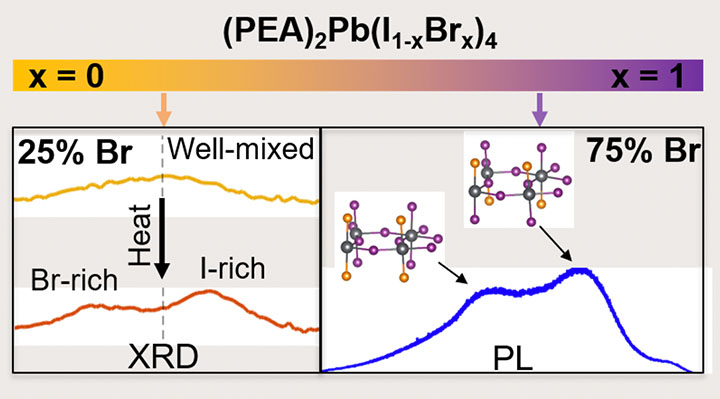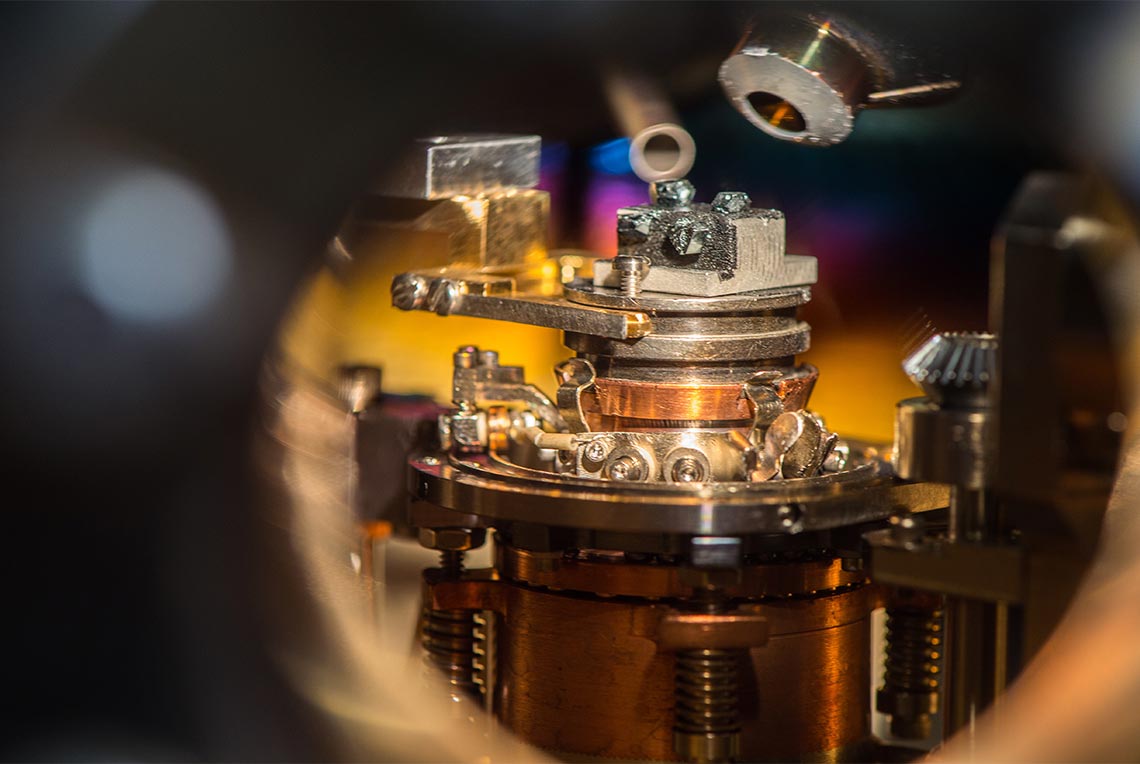Influence of Annealing and Composition on Crystal Structure of Mixed-Halide, Ruddlesden-Popper Perovskites
March 19, 2022
Hybrid organic-inorganic semiconductors, such as hybrid perovskites, are crystalline materials with unique properties derived from the organic or inorganic components. Resonant infrared matrix-assisted pulsed laser evaporation (RIR-MAPLE) is a gentle physical vapor deposition technique that can enable 2D hybrid perovskite thin films that are difficult to realize by solution-based processing.
This work describes the RIR-MAPLE deposition of a model 2D hybrid perovskite material system, namely phenethylammonium lead halide [(PEA)2PbX4] perovskites (n=1). Different schemes for delivery of precursor materials to the substrate, as well as different mixed halide compositions, are demonstrated using RIR-MAPLE, and the film morphology, crystal structure, and optical properties are characterized.
Scientific Achievement
RIR-MAPLE-deposited, mixed-halide layered perovskites [(PEA)2Pb(I1-xBrx)4] do not require post-growth annealing. The energetically preferred molecular arrangement of mixed-halide alloys was shown to be associated with (PEA)2PbBr4. Also, it was discovered that bromine prefers to occupy equatorial positions in mixed halide octahedra.
Significance and Impact
This work represents a significant advance in materials chemistry knowledge about mixed-halide, n = 1 Ruddlesden-Popper perovskites in response to post-growth annealing, a widely used processing procedure, and halide composition, a common technique for bandgap tuning.
Research Details
RIR-MAPLE enabled these observations via compositionally well-mixed perovskite films that do not require annealing, thereby providing unambiguous distinction between properties of as-deposited films and effects of post-deposition annealing.
Related People
Michael Toney
University of Colorado
Volker Blum
Duke University
Adrienne Stiff-Roberts
Duke University

X-ray diffraction (XRD) and photoluminescence (PL) spectra demonstrating unique, composition dependent behavior. RIR-MAPLE was used to deposit high-quality, crystalline phases of mixed-halide layered perovskites – (PEA)2Pb(I1-xBrx)4 for x = 0, 0.25, 0.5, 0.75, and 1. Halide phase separation was observed by XRD for x = 0.25 after annealing, consistent with a miscibility gap calculated for the same composition by first-principles calculations, whereas no phase separation was observed for x ≥ 0.5. Also, PL peak splitting was observed for x = 0.75 even though no compositional phase separation was observed. The peak splitting was explained by first-principles calculations that identified the coexistence of two distinct types of halide short-range ordering at x = 0.75.









